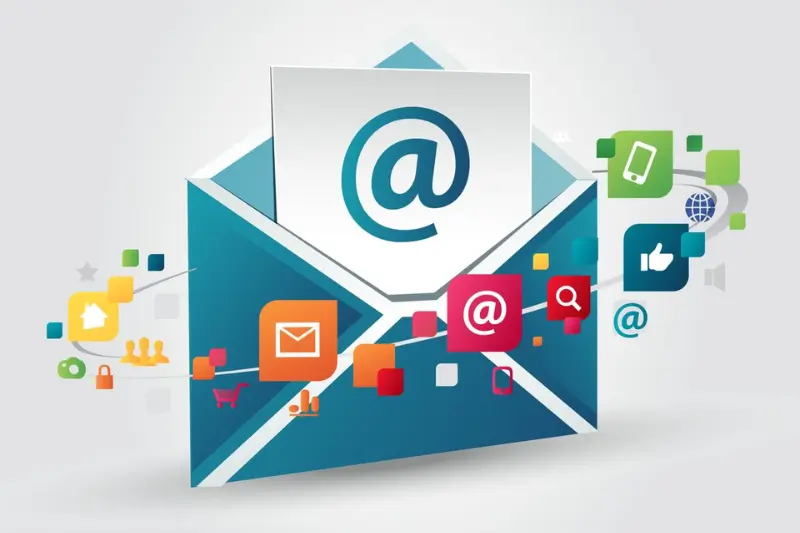Email marketing is one of the most effective ways to reach and engage customers. But to get the best results, businesses need the right tools. That’s where this email marketing tools comparison becomes useful.
By comparing different platforms, you can find a tool that matches your needs, whether it’s automation, analytics, or simple email design. The right choice can boost engagement, improve conversions, and save time in managing campaigns.
Key Features to Look for in Email Marketing Tools
When doing an email marketing tools comparison, it’s important to focus on the features that truly make a difference. The right features will not only save you time but also help you run more effective campaigns.

- Easy-to-use interface – A beginner-friendly dashboard makes it simple to create and send emails without needing technical skills.
- Email templates and drag-and-drop editors – Pre-designed templates and easy editors help you design professional emails quickly.
- Automation features – Tools with automated workflows, such as welcome emails and drip campaigns, allow you to engage customers at the right time.
- Analytics and reporting – Detailed reports on open rates, clicks, and conversions help you measure success and improve future campaigns.
- Integration with CRM and other apps – Seamless integration ensures your email marketing works hand-in-hand with sales and customer data.
- Pricing and scalability – Affordable plans with upgrade options allow your business to grow without switching platforms.
Best Email Marketing Tools Comparison
Choosing the right platform can be confusing, which is why an email marketing tools comparison helps you understand which software suits your business needs. Below are some of the most popular tools with their strengths explained:
Mailchimp
Mailchimp is one of the most well-known email marketing platforms. It offers a free plan that’s great for beginners and small businesses. With its drag-and-drop editor, ready-to-use templates, and simple automation workflows, it makes creating campaigns easy. Mailchimp also provides solid analytics to help track open and click rates. However, its advanced features can become pricey as your contact list grows.
ConvertKit
ConvertKit is designed with creators, bloggers, and online entrepreneurs in mind. It focuses on simplicity and audience engagement. You can set up landing pages, build email sequences, email marketing tools comparison and automate responses without much technical effort. While it may not have as many design options as Mailchimp, it shines in automation and subscriber management.
ActiveCampaign
If you’re looking for advanced automation, ActiveCampaign is one of the best choices. It allows you to create detailed customer journeys, segment audiences, and set up complex workflows. This tool is ideal for businesses that want to personalize campaigns at scale. While it has a learning curve, the features are powerful enough to boost conversions significantly.
GetResponse
GetResponse goes beyond basic email marketing by offering webinars, sales funnels, and even an AI-powered campaign generator. It’s perfect for businesses that want an all-in-one solution. With automation tools, CRM integration, and detailed analytics, it helps manage both email and sales in one place. The additional features make it slightly more expensive but valuable for growing businesses.
MailerLite
MailerLite is known for being budget-friendly while still offering excellent features. It provides an intuitive drag-and-drop editor, customizable templates, and automation options. It’s a great option for small to medium-sized businesses that want affordability without sacrificing quality. Plus, its customer support is highly rated.
Sendinblue (Brevo)
Sendinblue, now known as Brevo, is unique because it combines email and SMS marketing in one platform. This makes it perfect for businesses that want to reach customers across multiple channels. It also offers automation, segmentation, and transactional emails. The pricing model is based on emails sent rather than subscribers, making it cost-effective for businesses with large lists.
You may also like to read these posts:
Best Creative Writing Prompts for Beginners to Try Today
Simple Interior Design Ideas for Homes to Create Style
Best Digital Marketing Tools and How to Use Them Effectively
Collaboration Tools for Remote Teams: A Complete Guide
Benefits of Using Email Marketing Tools
When doing an email marketing tools comparison, it’s not just about features — it’s also about the benefits these tools bring to your business. Here are some key advantages:

Saves Time with Automation
Email marketing tools allow you to set up automated workflows, such as welcome emails, birthday offers, and drip campaigns. This saves you hours of manual work while ensuring customers receive timely and relevant messages.
Helps Reach the Right Audience
With segmentation and personalization features, you can send targeted messages to specific groups of people. This increases the chances of engagement, as your audience receives content tailored to their interests.
Improves Open and Click Rates
Most tools provide A/B testing and personalization options that make emails more appealing. By optimizing subject lines, layouts, and timing, you can achieve higher open and click-through rates.
Tracks Performance with Detailed Reports
Analytics and reporting features give you insights into how your campaigns are performing. You can monitor open rates, link clicks, conversions, and more. These insights help refine your strategy for better results.
Supports Business Growth
As your business scales, email marketing tools grow with you. From handling larger subscriber lists to offering advanced features like CRM integration, these platforms support long-term growth and customer relationship building.
Common Mistakes to Avoid
While exploring an email marketing tools comparison, it’s equally important to know the common mistakes many businesses make. Avoiding these can save time, improve engagement, and strengthen customer relationships.
Spamming with Too Many Emails
Sending too many emails can annoy your audience and lead to unsubscribes. It’s better to focus on quality content and the right frequency instead of overwhelming your subscribers.
Ignoring Mobile-Friendly Designs
A large number of users check emails on their phones. If your emails aren’t mobile-optimized, they may look broken or hard to read, causing users to delete them instantly. Always choose responsive templates.
Not Segmenting the Audience
Treating all subscribers the same is a big mistake. Without segmentation, your emails may feel irrelevant. Using your tool’s segmentation features helps deliver more personalized and effective campaigns.
Overlooking Analytics
Many beginners send emails but don’t track results. Ignoring analytics means you miss insights that could improve future campaigns. Always review open rates, click-throughs, and conversions to refine your strategy.
FAQs About Email Marketing Tools
Which is the best free email marketing tool?
Mailchimp is one of the most popular free options for beginners, offering essential features like templates and basic automation. MailerLite also has a free plan with generous limits, making it another great choice for startups.
Do small businesses really need paid tools?
Not always. Free tools are great for starting out, but as your list grows and you need advanced features like automation, segmentation, and analytics, a paid plan becomes more beneficial.
Can I automate emails without coding?
Yes, most modern email marketing tools provide drag-and-drop automation builders. You can set up welcome sequences, abandoned cart reminders, and drip campaigns without any coding knowledge.
Which tool is best for e-commerce stores?
ActiveCampaign and GetResponse are excellent for e-commerce because they offer advanced automation, customer journey mapping, and integrations with platforms like Shopify and WooCommerce.
How many emails should I send per week?
There’s no one-size-fits-all answer. Most businesses send between 1–3 emails per week. The key is consistency and value—don’t overwhelm subscribers, but also don’t disappear from their inbox.
👉 Would you like me to now finish the blogpost with a Conclusion that recaps the comparison and encourages readers to choose the right tool?
Do small businesses really need paid tools?
Not always. Free tools are great for starting out, but as your list grows and you need advanced features like automation, segmentation, and analytics, a paid plan becomes more beneficial.
Can I automate emails without coding?
Yes, most modern email marketing tools provide drag-and-drop automation builders. You can set up welcome sequences, abandoned cart reminders, and drip campaigns without any coding knowledge.
Which tool is best for e-commerce stores?
ActiveCampaign and GetResponse are excellent for e-commerce because they offer advanced automation, customer journey mapping, and integrations with platforms like Shopify and WooCommerce.
How many emails should I send per week?
There’s no one-size-fits-all answer. Most businesses send between 1–3 emails per week. The key is consistency and value—don’t overwhelm subscribers, but also don’t disappear from their inbox.
Conclusion
Doing an email marketing tools comparison is the best way to find the right platform for your business needs. From Mailchimp’s beginner-friendly setup to ActiveCampaign’s advanced automation, each tool offers unique benefits. ConvertKit helps creators, GetResponse provides an all-in-one solution, MailerLite focuses on simplicity, and Sendinblue (Brevo) brings email and SMS together.
Every business is different, so the “best” tool depends on your goals, budget, and audience. The good news is that most platforms offer free plans or trials. Take advantage of these to test features and see which tool fits your workflow best.
By choosing the right email marketing tool, you’ll save time, improve customer engagement, and support your business growth in the long run.







